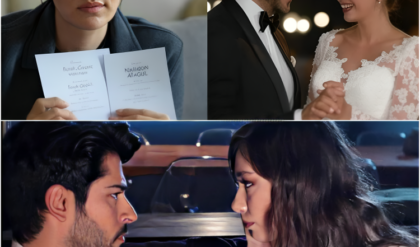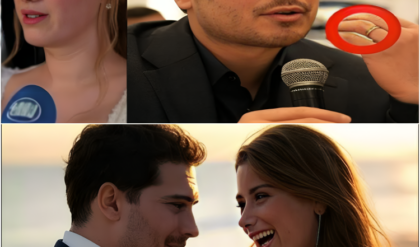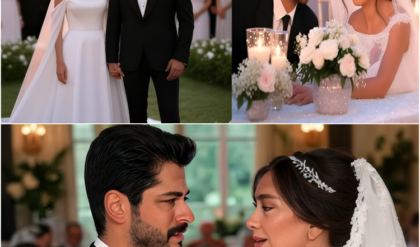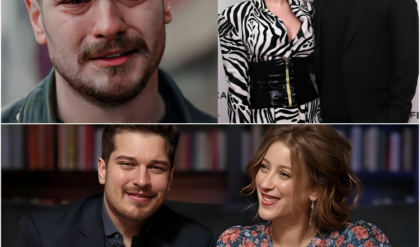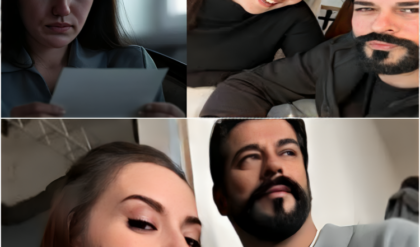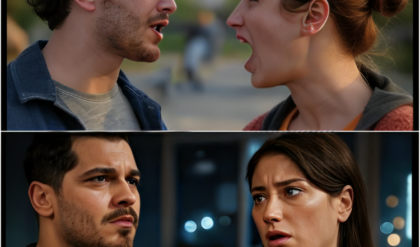The Queen’s Secrets: Behind The Curtain Of Buckingham Palace
.
.
.
Buckingham Palace serves as the British Royal Family’s London residence and was Queen Elizabeth II’s administrative headquarters before her death on Sept. 8, 2022. The State Rooms are still used by King Charles to receive and entertain guests. Of course, that makes it a must-visit spot when traveling to London.
Many gather in front of the palace to witness the ceremonial changing of the guards, and tours are available on occasion to give visitors a glance at State rooms. But those only make up a small portion of the 775 rooms within Buckingham Palace, 52 of them dedicated to the Royal Family and their guests.
Want to get a better understanding of exactly how the Royal Family lives? Follow along on our tour.
Buckingham Palace was originally Buckingham House, constructed in 1703. King George III bought the house in 1761 for his wife, Charlotte.
The home received an expansion by extending the length of the home in 1826. By 1847, the East Facade was added with the two connecting wings to enclose what’s called the Quadrangle and become the palace we see today.
The view we most often see of Buckingham is that facing the East Facade, as the Royal Family appears on special occasions on the balcony off of the Centre Room.
:quality(80)/granite-web-prod/cc/2b/cc2bf348bd54402b90a6df92bb6a7250.jpeg)
Behind the Royal Family awaits the Centre Room, also known as the Chinese Lunch Room because the room is filled with Chinese regency furnishings.
Much of the pieces came from the Royal Pavilion in Brighton, and while this room and the adjoining Yellow Drawing Room undergo a renovation, 150 pieces will be returned to Brighton.
:quality(80)/granite-web-prod/a1/64/a1641b9b88e64013a3b9284761ddbfff.jpeg)
Receiving its vibrant color for the arrival of Emperor Napoleon III and his wife Eugenie in 1855, the Yellow Drawing Room was adorned in yellow silk.
:quality(80)/granite-web-prod/c4/ae/c4ae000b387344189b142c2a8ef935e2.jpeg)
The wallpaper from this portion of the Yellow Dining Room is a whopping 200 years old and originally from the Royal Pavilion (a seaside palace in Brighton, England).
It took a month to painstakingly remove to be preserved during the renovation of the room in 2020.
:quality(80)/granite-web-prod/2e/c0/2ec0c3a622234a6a80781d8ef1683fd3.jpeg)
Connecting the original palace with the East Facade, Ambassadors’ Court is where dignitaries and ambassadors arrive to enter Buckingham Palace.
:quality(80)/granite-web-prod/00/e4/00e43c8b019e4753ba0601533b1b1b34.jpeg)
The Grand Entrance is found within the Quadangle of the inner courtyard.
It is here where the Queen would exit and enter the palace and where guests arrive for special events leading into the Grand Hall.
:quality(80)/granite-web-prod/a0/0d/a00d656efa1844d99f49ce7deeefcea6.jpeg)
The State Apartments and rooms included on the official tour of Buckingham Palace can be found in the West Wing, which overlooks the gardens of the palace.
Much of the Ground Floor rooms here are used as offices, including the Keeper of the Privy Purse, the manager of the Royal Family’s finances.
:quality(80)/granite-web-prod/09/e1/09e1a6aa8de04e63a746a007405d8058.png)
Entering the West Wing from the Ground Floor takes you to the Grand Hall, also called the Marble Hall for its marble columns.
:quality(80)/granite-web-prod/0c/83/0c8369b64c26459fb4c1bf40d8597f3a.jpeg)
To arrive at one of the royal events, you’d climb the Grand Staircase to the First Floor.
:quality(80)/granite-web-prod/85/cb/85cb64fcd33c4fdca18e47766c6feda1.jpeg) However, if you didn’t ascend the staircase, you’d find yourself in the Bow Room. This room serves as an entranceway to the gardens, where Her Majesty held her summertime garden parties.
However, if you didn’t ascend the staircase, you’d find yourself in the Bow Room. This room serves as an entranceway to the gardens, where Her Majesty held her summertime garden parties.
It is also used to host lunches for visiting Heads of State.:quality(80)/granite-web-prod/fa/fb/fafb858e61254265b7cbd26c9bf32ef1.jpeg)
Within these walls are where magical events happen.
The ballroom is not only the place where the Queen would host her Diplomatic Reception and State banquets, but this is where future King of England Prince William and Catherine Middleton held their wedding reception.
At one end of the ballroom was a throne for the Queen and Prince Phillip. At the other end is an organ that was originally used at the Royal Pavilion’s Music Room, commissioned by George IV.:quality(80)/granite-web-prod/21/c6/21c6483b8b9845398d3e568e8fd39eed.jpeg)
The Ballroom measures 120-feet long, 59-feet wide and 44-feet high. When used for banquets, a horseshoe table shape is arranged. Place settings include six drinking glasses per guest, and more than 2,000 pieces of silverware are used for a dinner of just 170 guests.
A booklet featuring the menu, the guest list and seating plan, and the music that will be played during the event is placed atop the china. The colors of the nation visiting are featured in a ribbon that decorates the booklet.:quality(80)/granite-web-prod/13/b9/13b9cb1f473d4fab89c538e3f5c0aef3.jpeg)
Although not as large as the Ballroom, the State Dining Room of Buckingham Palace can seat up to 170 guests when the Queen would host her State Dinners.
:quality(80)/granite-web-prod/59/19/5919b88b7f514d578841b943ddbdaf4e.jpeg) Queen Victoria and Prince Albert loved music and loved to play the piano and sing together, so they created this stunning Music Room.
Queen Victoria and Prince Albert loved music and loved to play the piano and sing together, so they created this stunning Music Room.
During Queen Elizabeth II’s reign, it was used for more than music, though. This is where she had her son and daughter, Prince Andrew and Princess Anne, christened, as well as her grandson, Prince William.:quality(80)/granite-web-prod/ae/b6/aeb6313e9e5c4da0a1ef0c4018c5eb93.jpeg)
When the occasion called for the Queen to fulfill her monarch duties, she took a seat on her throne and welcomed the court.
When not in use for courtly gatherings, the room is used as a smaller dance room when the ballroom is deemed too large.
:quality(80)/granite-web-prod/65/91/6591914c43b34d08b043dcc4fdb2f283.jpeg)
Family portraits are often taken in the Throne Room because the risers for the throne help organize family members for photoshoots.
Plus, that velvet curtain screams royal backdrop.:quality(80)/granite-web-prod/6e/07/6e0715fdb5824a7090d767fa38f7da26.jpeg)
The green color of this drawing room can be attributed to Queen Victoria and Prince Albert who loved to collect watercolors and Sevres porcelain found in this room.
This is an antechamber to the Throne Room and the ceremonial route that the Queen and her guards would take.:quality(80)/granite-web-prod/50/4e/504e41397a0a48ddbd21d95eb578671f.jpeg)
Named for Tsar Nicolas I, who visited in 1844, this room is often used to receive guests for State duties. His portrait once adorned the walls of the room but has since been removed.
The Queen had a buzzer she would push to announce she was ready to accept a guest, and many meetings included photographers to capture the moments.:quality(80)/granite-web-prod/04/b0/04b0f8f8a0a5463580a8284a09b1db99.jpeg)
When the Queen received guests in a more intimate fashion, this room was often the setting.
Not only was the White Drawing Room a favorite of the Queen, but it also contains a hidden doorway to her private apartments. :quality(80)/granite-web-prod/a1/95/a195c9bd66754b19a6ee92f535f76f04.jpeg)
The White Drawing Room’s doorway is hidden behind a very large gilded chest and mirror.
There are rumors of underground tunnels linking the palace to Whitehall and the Houses of Parliament.:quality(80)/granite-web-prod/93/8d/938de3f497484d9daa12b66acd86cb44.jpeg)
Anyone who watched the Queen address her people at Christmas has seen the Regency Room.
With its green and gold color scheme, it pairs well with holiday decor for her intimate annual broadcasts.:quality(80)/granite-web-prod/2d/be/2dbed77270ed423ca7c74d76934258b4.jpeg)
The blue wallpaper of this room used for hosting State officials has been on the walls as-is since 1949.
Until the recent renovations began in 2019, the post-war redecoration was the last for the palace, and some have complained it has been stuck in time. The Blue Drawing Room, however, will be staying blue.:quality(80)/granite-web-prod/d4/77/d4770572115641489629a58be8c4a06d.jpeg)
The suite offered to Heads of State, including President Obama, when they visit and stay at the palace is a series of rooms that includes a bedroom and a sitting room. There are many additional rooms located around it so security and staff can stay close.
Before abdicating the throne in 1936, King Edward VIII called the Belgian Suite home. It is located on the Ground Floor beside the Minister’s Staircase. :quality(80)/granite-web-prod/bf/c0/bfc0d8b7b0164cae87ccb58566af4652.jpeg)
When the Queen’s father, King George VI, became king, the Belgian Suite became the home to her family when she married Prince Phillip in 1947.
She even delivered her son Edward in the bedroom. In fact, all three of Queen Elizabeth’s sons were born at Buckingham Palace. Princess Anne was born at Clarence House during the palace renovations.:quality(80)/granite-web-prod/fb/30/fb3099b43103491197ae204e128caa55.jpeg)
Connecting the rooms of the First Floor of the West Wing, this is not your average corridor.
The Picture Gallery is a small museum showcasing some of the works owned by the Royal Family:quality(80)/granite-web-prod/f8/51/f851675f434e493c9305e7665290fc09.jpeg)
Several dignitaries have passed through the Picture Gallery during State Banquets, like during the one pictured here in June 2019 for the U.S. President’s three-day visit.
A second art gallery can be found in the space that was once a chapel for Queen Victoria. It was destroyed during World War II, but to celebrate the Queen’s Golden Jubilee in 2002, it reopened as the Queen’s Gallery. Much of the work within Buckingham Palace is being relocated so that more people get a chance to view the artwork.:quality(80)/granite-web-prod/64/51/64513c6d93a84fdb9030281e278cc02a.jpeg)
The main corridor of the East Wing just received a makeover in 2019.
The palace tweeted the photo on the right: 3,000 works of art and decor found in this corridor have been removed, including its 100 mirrors, 40 chandeliers, 30 clocks and 200 paintings as it goes through its current refresh.
:quality(80)/granite-web-prod/d0/76/d076d6027eff49f689c046e6bc460199.jpeg)
